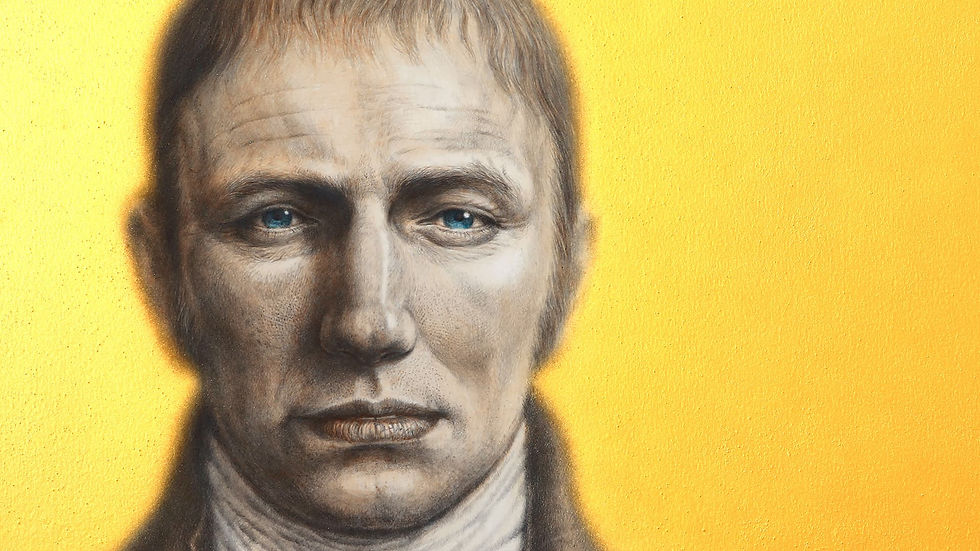
Wordsworth, Rawnsley &
Lake District
Rydal Mount, Ambleside
14/8/2021 - 30/9/2021
Although it has been overshadowed by the COVID-19 crisis, 2020 was another important year for the English Lake District. It was the 250th anniversary of William Wordsworth's birth and the centenary of Hardwicke Drummond Rawnsley's death. The former is the well-known Romantic Poet Laureate, and the latter an Anglican priest and one of the three founders of the National Trust, who inspired Beatrix Potter with regard to the importance of conservation. On her death, Potter bequeathed nearly all her property to the National Trust, including over 4,000 acres of land, sixteen farms, cottages and herds of cattle and Herdwick sheep. It is commonly agreed that Wordsworth was one of the earliest environmentalists working to preserve the natural beauty of the English Lake District. Rawnsley was born a year after the death of Wordsworth and appears to have inherited the passion of the poet. These two men championed the conservation of natural beauty in the Lake District and beyond. Their voices echo all the more in our contemporary society.
For celebrating this commemorative year, I have launched my new art project "Wordsworth, Rawnsley and Lake District", which was again supported by Arts Council England. I have produced two portraits of each figure in the double-vision style, which proved a success during my previous art project "Conversation with Ruskin". I portrayed Hardwicke Rawnsley when he first met the young Beatrix Potter at Wray in 1882 while he was working as a vicar of the St Margaret of Antioch parish church in Wray Castle, passionately talking to her about the importance of conservation. At the same time, William Wordsworth in his late 20s when he and his sister Dorothy settled at Dove Cottage. This event coincided around when Wordsworth started to write his autobiographical poem "The Prelude".
Following the same concept of the portrait of John Ruskin entitled "Conversation with Ruskin (Ecce Homo)", which I produced for my touring solo art project "Conversation with Ruskin", I portrayed these historical figures in a horizontal double-vision image. By carefully determining the distance between the two images, I promote a visual illusion so that each portrait can be seen as a single image in another dimension, emerging from the surface of the supports. It is a paradoxical approach, achieved by stimulating a visual illusion. However, it is designed to amplify the mystery of human existence by raising questions about the distance between the visible and invisible, physical and spiritual; abstract concepts that only belong to humanity. In this way, I attempted to create a platform of conversation regarding whether our mind, soul and spirit exist, or are in fact nothing but multi-complex electrochemical processes in our brain, a question raised by the era of Artificial Intelligence. I aimed to portray them as the spiritual guardians of Lakeland and beyond in a period of ecological and existential crisis.
With the assistance of the Arts Council England Emergency Response Fund, I could complete these works (apart from the drawings) with my unique brush hatching technique using Japanese sumi ink and acrylic, which I created and have developed over the past 16 years. This unique line hatching method is inspired by the concept of designo, which was established in the Florentine School during the Renaissance, combined with neurological studies, one of which revealed that the human visual brain perceives objects predominantly by oriented lines. I also produced a series of nature-themed small works complementary to the project theme with the same line hatching method to explore a sense of place, a meaningful connection with these historical figures, the Lake District and beyond. I completed all works with the gold background using acrylic gold paint inspired by the Japanese traditional painting style, such as Fusuma-e (sliding door painting) and Byōbu-e (folding screen painting) for exploring my cultural roots. In this way, I made my utmost effort to pay homage to these important historical figures of the Lake District, in a way that is appropriate to their memory, despite, or even because of these challenging times.
This project culminated as my solo exhibition at Rydal Mount, where William Wordsworth lived for 37 years.

































